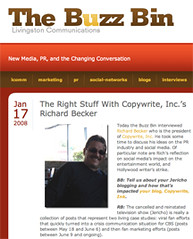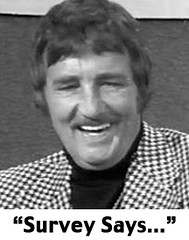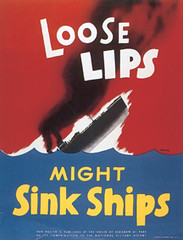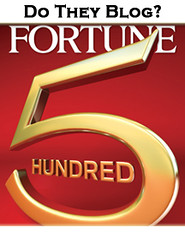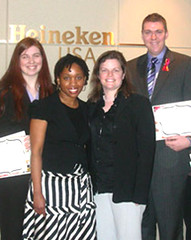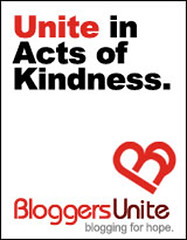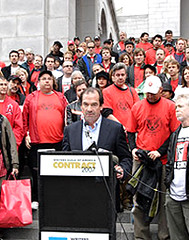If any year will ever stand out as the most dramatic change of direction for network television, it will likely be 2007. And if there is any credit is to be given, it doesn’t belong to a single network or broadcast executive, but rather the collective efforts of fans from several television shows, with
Jericho Rangers leading the charge in the form of 20 tons of nuts and constant coverage from personal blogs to The Wall Street Journal.
Sure, while some networks and corporations like AT&T were quietly looking at broadcast-digital convergence long before Jericho was cast, Jericho fans helped set the agenda this year and hastened the pace. They did much more than save a television show by convincing CBS to offer up an olive branch in the form of a truncated second season premiering Feb. 12.
They demonstrated the power of organizing consumers via social media. They set a precedent of tracking signatures, e-mails, postcards, phone calls, and protest purchases. They pushed for sweeping reforms at Nielsen Media Research, enough so that Nielsen began to listen to them more than the networks it serves. They established alliances with other fan bases like
Veronica Mars fans to expand their campaign five-fold. They made contact with writers, producers, cast members, and crew, giving everyone something to think about, including advertisers.
Passive viewers became active consumersThe writer’s strike is precisely what I’ve been writing about for almost two years: the transition between the era of old to the era of new media. The Writers Guild of America (WGA) even cited it as the primary explanation for the most recent stall in contract negotiations.
"The media conglomerates know that the core issue in these negotiations is new media. Their current proposals would cause writers even more economic harm in the future than they claim this strike has caused.” — Writers Guild of AmericaWhile the networks seem unwilling to make an agreement, the WGA and David Letterman's Worldwide Pants production company
have reached a contract
agreement that includes the proposal put forth by the WGA on Dec. 7.
In other words, production companies and writers are starting to make the deals that the networks are unwilling to make. And if that happens across the board, then network television will be reduced to a distribution channel at a time when content creation is the only tangible commodity. Distribution is easy.
Change happens in small, unseen waysCox Communications is one of a handful of
multi-service broadband cable service providers that is beginning to offer OnDemand commercial programming, which would allow companies to produce and distribute their own television programs. This means that a company has the potential reach of 6 million residential and commercial consumers.
Once produced, segments of these shows could easily be repackaged for distribution across other platforms like YouTube, Revver, Apple iTunes, and countless others. The possibilities of programming are seemingly endless, well beyond OnDemand infomercials. It also opens the doors for enterprising producers to create their own programs, saving six to eight minutes per half hour for sponsors, much like local market home shows used to do.
The networks are hastening the need for changeAs ratings continued to fall this last year, advertising rates continued to rise. The reason was that advertisers were less willing to experiment and attempted to simply purchase more spots to reach the same viewing audience that they once captured by buying fewer shows.
It’s only a matter of time before the burden of building reach shifts away from advertisers and onto the networks again. After all, the concept of last minute scatter market buys will likely die this year as marketers begin to realize they spent 18 percent more for primetime "scatter" than they ever hoped to save.
Even the classic measure of cpm (cost to reach 1,000 viewers) is being questioned. It doesn’t seem to hold as much weight as a measure as it used to. A lower cpm, augmented by Internet presence, can have a greater impact and make more sense as fans are eager to spend an hour or two talking about their favorite show on the net rather than watching the programs that follow.
Old media will become an abandoned term this yearIt’s not so much that old media is dead as much as it is that old media has been challenged to become indistinguishable and better than new media. It’s the kind of challenge that will lead to bright possibilities in
journalism and broadcast. The new year will be the year to decide. Will a company adapt or die?
Reality programming is not the answer. With rare exceptions like Survivor and American Idol, the net has taken over the reality programming niche. Not only can we watch real-life realty clips on YouTube, but also entire lives put up for consumption with live streaming. The networks need better niche programs.
It’s the very reason networks have to end the writer’s strike soon. It’s only a matter of time before some people begin to realize that the networks are not the only way to reach an audience. Big names in every facet of the entertainment industry are learning that the old model of distribution is dead.
Don’t believe it? Heck, even this blog, which might be considered in the minor leagues compared to what we would like to do on our own or with partners, reached 100,000 people this year. Not bad for an experimental platform.
Thank you all again for making this year a success. We look forward to seeing you in 2008! Happy New Year. Please be safe.







